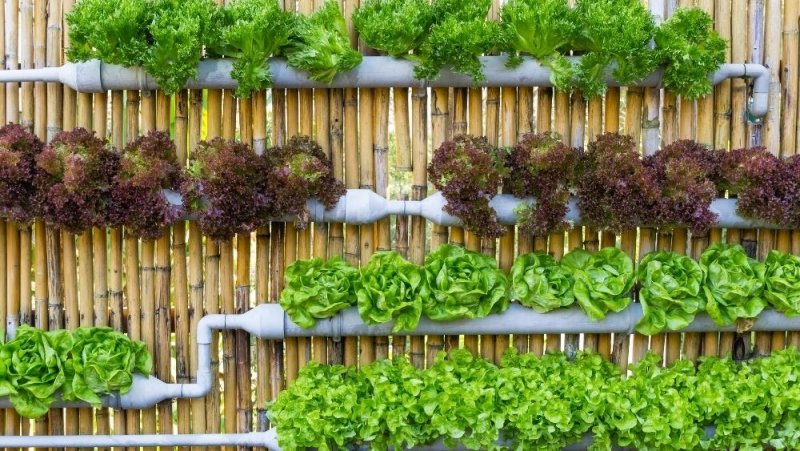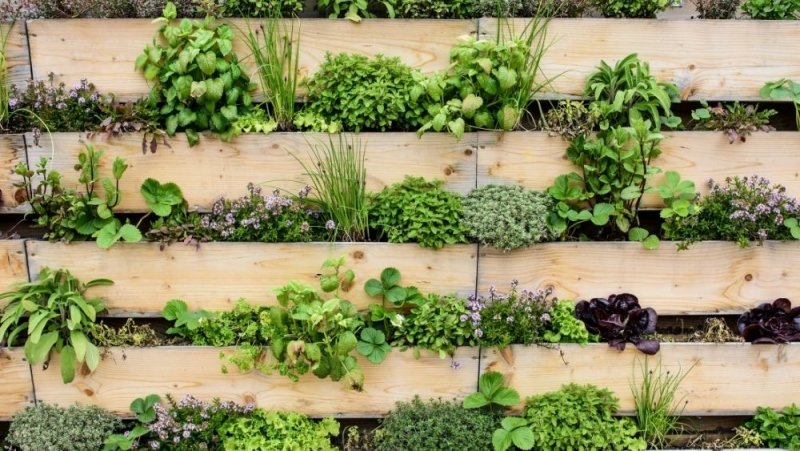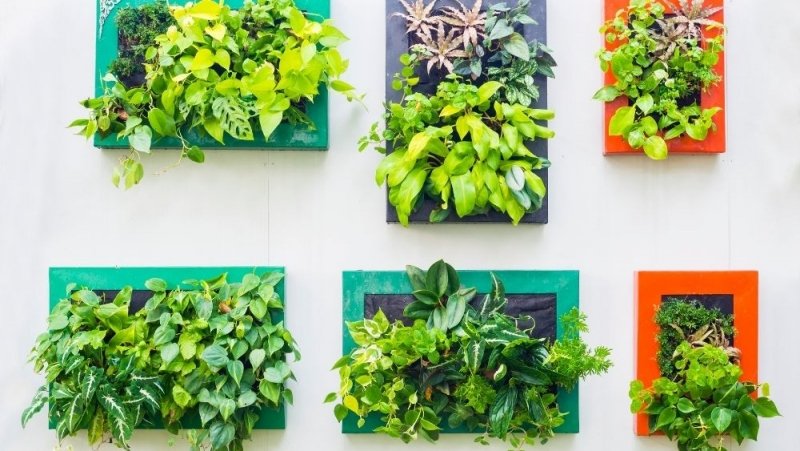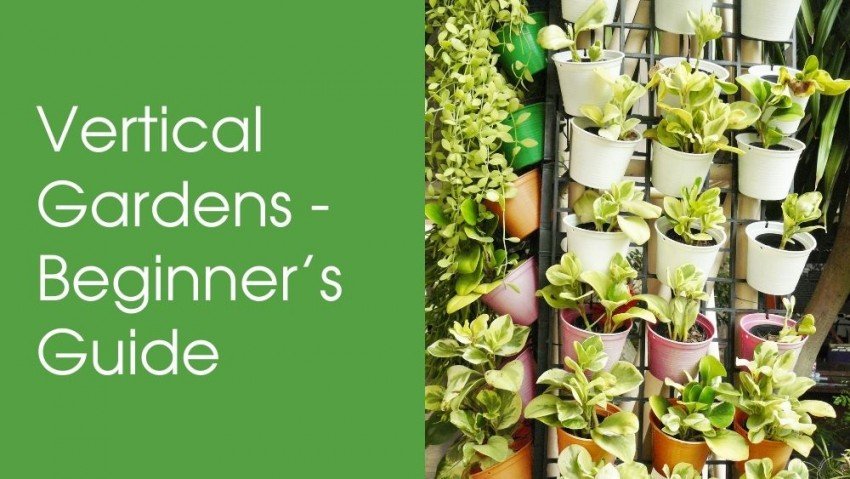We all know vertical gardens are a trend, as you probably have heard the term frequently in the recent years, especially after the lockdown. But, just in case you are curious about the idea, Nelda a dynamic NGO based in Pune, India brings you what it means to have a vertical garden at your place. We also think vertical gardens give a place a dramatic look and conserve our resources, so it becomes a typical topic for us.
Vertical gardening is a popular technique used to grow plants vertically with the help of certain structures. Typically, raised beds, containers, or trellis are used to build a vertical garden and make complete use of the space by building a garden that grows up. Vertical gardening is a smart way to bring eyeballs to any area, or even hide an unattractive one.
Vertical gardening has many advantages, such as:
- It saves space along with protecting your plants from pests and diseases
- Your veggies become easy to grow when you plant them vertically
- It lets you turn any wall or unused space into a beautiful garden
- Wherever you select to build your vertical gardens, both indoors and outdoors, they help us with good air circulation
Basics of Vertical Gardening

Before you start planting, you need to build a structure. Reserve space for the plants that you select to grow in your vertical garden. Get elements like a trellis to the ground or connect large containers to the walls. Such elements will let you grow vines, vegetables, herbs, and flowers in your vertical garden and will take much less space than your regular gardens. Get new garden rooms or set hidden areas that are ready for being discovered.
The most important question we always love is ‘why’ and the next one is ‘how’. Let’s address these basic concepts of vertical gardening which will complement your planting and growing cycles. But a lot of the same tips cross over from your regular planting.
Picking Plants For Vertical Gardening
Once you are settled with your garden structure, you can decide the plants you will be growing in your vertical garden. It’s easy to grow almost everything from herbs, flowers, vegetables, perennials to succulents. But, since you are growing this garden vertically, you need to think about its flexibility. For example, veggies like tomatoes or bitter gourd are perfect for your vertical gardens than growing shrubs with rigid wooden stems. When you think about growing plants, you also need to consider their habits. Yes, plants have habits too. Choose plants with similar growing needs. For example, you can choose sun-loving plants or all shade-loving plants, but not a mix of both. If you put a plant that grows faster next to the one that needs more time to grow, then the faster-growing plant will be an obstacle to the growth of the other plant.
Here are some plants Nelda recommends for your vertical garden:
- Tomatoes
- Bitter Gourd
- Summer Squash
- Long Melon
- Peas
- Green Beans
- Cucumbers
- Bottle Gourd
- Zucchini
- Yard-long Beans
You can leave a message for us, and we can provide you with quality seeds for your vertical garden in Pune!
Vertical gardens make plants grow differently. Some plants need physical support to the structures, while others loop themselves around openings. Plants cultivated in a vertical garden need more water and regular doses of fertilizers as they are open to more light and wind.
Knowing the time of vegetable planting is also important along with the region you choose.
Where to Plant

If you are looking for techniques of vertical gardening as there is no to little space in your yard, then the question of where to plant could well be an important point to consider. But, if you are looking for a feature, then placement is a factor. The good news is that a vertical garden may be virtually anywhere, even indoors, if the fancy takes you.
The important thing to consider while deciding the place to plant is sun and shade. Feel free to plant anywhere, but then you will need plants that will grow easily in that area. If you are creating a set of cacti, for example, believing these are hardy growers and can take a lot of punishment, you are still going to need to give them some sun and some shade if they are to thrive.
Maintenance
Thinking ahead is important while setting up your garden. How are you going to maintain it? Are you just excited by your pocket herb garden in the kitchen? Are you just rushing out and buying everything you see before reading on? Maintenance is a well-needed part of the planting and vertical gardening.
Types of Vertical Gardens
- Trellises
- Stakes
- Fences
- Hanging baskets
And some other types of structures are suitable for vertical gardens as well. You can easily rethink an existing structure such as a shed and turn it into a vertical garden.
Shelves

It’s easier to grow any type of vegetables in the containers and shelves offer an extra-ordinary space for growing different types of vegetables as well. You can easily put containers on shelves and place shelves as high as the space allows. Grow easily growing plants like spinach and lettuce on your shelves. Put your shelves in a way that your plants get enough amount of sunlight. You can use any type of shelve, but we recommend using slat shelves. It’ll allow extra water to drip off and smooth the circulation of air.
Hanging Baskets
Many vegetables grow in hanging baskets, particularly the ones with trailing abilities. You can grow herbs like basil, thyme, and oregano in hanging baskets. These herbs not only look good, but also grow properly in these baskets. However, you have to keep these plants flourishing all the time as plants may dry out easily. Make sure the plants growing in these baskets are light and won’t make the baskets drop.
Here are a few common questions about vertical gardening answered.
What vegetables will need support?
Common veggies like cucumbers and green beans with tendrils are good at climbing a trellis, or walls, but they will still need some support. You will need to tie these plants until they grow well. But, crops like tomatoes or raspberries which have long branches will need constant support.
What should be kept in mind while growing plants close to each other in a vertical garden?
You can consider vining crops like peas or beans with flowers; this will help keep pests and diseases away. Whenever you are keeping a set of plants together, understand their growing habits. For example, you will need to place sun-loving plants close to a shade-loving plant.
How to consider watering my vertical garden?
You can think of a DIY drip irrigation system or water your plants neatly to make sure they are properly maintained. Plants growing in vertical gardens need more watering due to the constant wind flow. You can check our DIY watering techniques from Nelda Organization.
For more on getting sampling easily for your own use or donation, visit www.nelda.org.in and you can buy or donate saplings for planting.

